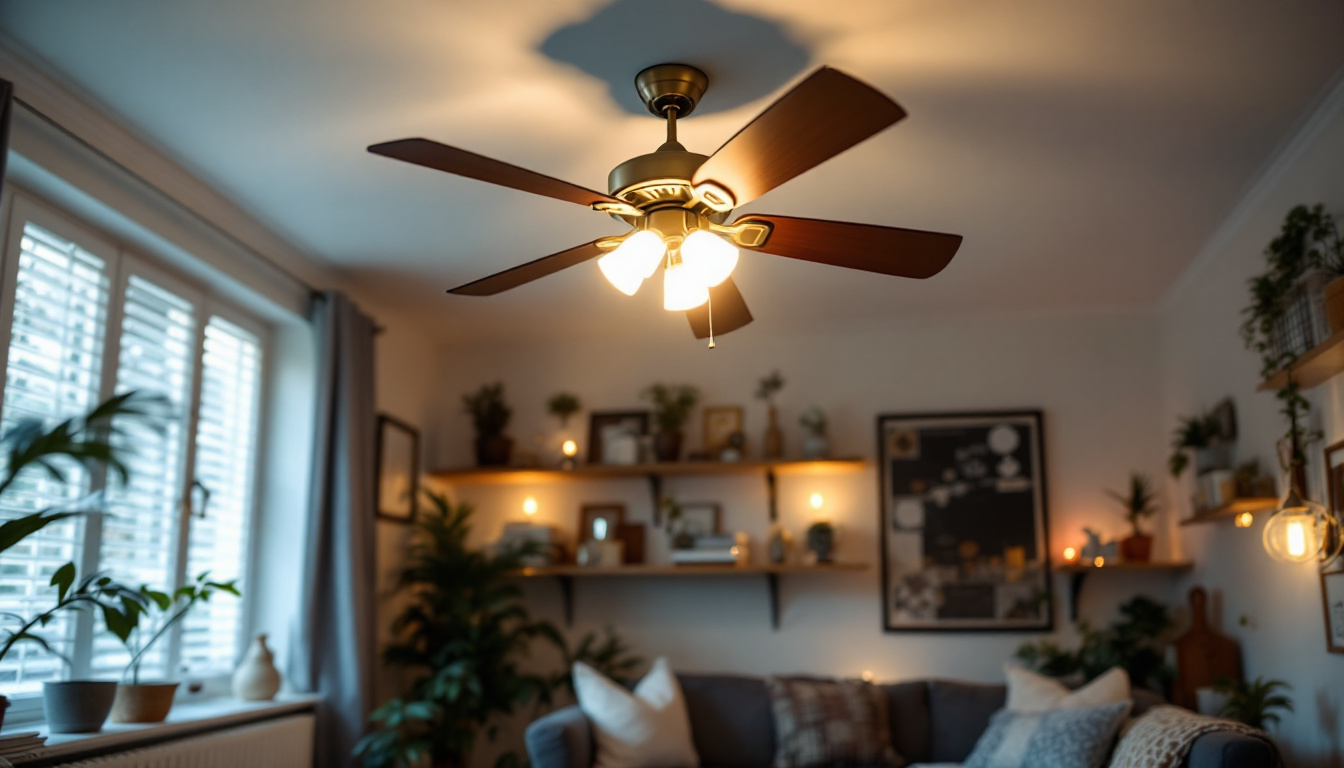
Lighting projects can be intricate and challenging, especially when the stakes are high. For lighting contractors, understanding the nuances of lighting design, installation, and maintenance is crucial to delivering successful outcomes. This article provides valuable insights into common pitfalls and how to avoid them, ensuring that projects run smoothly and efficiently.
Before diving into any lighting project, it is essential to have a clear understanding of the project scope. This includes knowing the client’s needs, the specific requirements of the space, and any constraints that may affect the design.
A comprehensive needs assessment is the foundation of any successful lighting project. Engage with the client to discuss their vision, preferences, and functional requirements. This dialogue will help identify the type of lighting that best suits the environment, whether it’s ambient, task, or accent lighting.
Additionally, consider the specific activities that will take place in the space. For example, a workspace may require bright, focused lighting, while a restaurant may benefit from softer, mood-enhancing illumination. Understanding these nuances is key to creating a tailored lighting plan.
Moreover, it is beneficial to explore the emotional and psychological effects of lighting on individuals. Research indicates that different lighting temperatures and intensities can influence mood, productivity, and even appetite. By incorporating this knowledge into the needs assessment, you can create an environment that not only meets functional requirements but also enhances the overall experience for its occupants.
Assessing the existing electrical infrastructure is another critical step. Inspect the current wiring, circuit capacity, and any fixtures that may need to be replaced or upgraded. This evaluation will help identify potential challenges and ensure that the new lighting system can be integrated seamlessly.
Neglecting this step can lead to costly modifications down the line, so it’s vital to address any issues upfront. A thorough evaluation also allows for better budgeting and resource allocation, reducing the risk of unexpected expenses.
In addition to evaluating the electrical setup, consider the architectural features of the space that may impact lighting design. Elements such as ceiling height, window placement, and wall colors can significantly affect how light is perceived and distributed. By taking these factors into account, you can design a lighting scheme that not only meets technical specifications but also enhances the aesthetic appeal of the environment, creating a harmonious balance between form and function.
The selection of lighting fixtures and technologies can significantly impact the overall success of a project. With a myriad of options available, it’s essential to make informed choices that align with the project’s goals and constraints.
Familiarity with various lighting technologies is crucial for contractors. LED, fluorescent, incandescent, and halogen each have unique characteristics, advantages, and disadvantages. LEDs, for instance, offer energy efficiency and longevity but may have higher upfront costs compared to traditional incandescent bulbs.
Contractors should weigh these factors carefully, considering not only the initial investment but also the long-term operational costs. This understanding will enable them to recommend the best solutions for their clients while ensuring compliance with energy regulations. Additionally, the rise of smart lighting technologies has introduced new dimensions to lighting design. These systems allow for remote control and automation, enabling users to adjust brightness and color temperature according to their preferences or time of day, thereby enhancing both energy efficiency and user experience.
While functionality is paramount, aesthetics should not be overlooked. The lighting design should complement the architecture and interior design of the space. Collaborating with architects and interior designers can help create a cohesive look that enhances the overall ambiance.
Consider the color temperature of the light, as it can influence the mood of a space. Warmer tones may create a cozy atmosphere, while cooler tones can promote alertness and productivity. Striking the right balance between aesthetics and functionality is vital for client satisfaction. Moreover, the placement of lighting fixtures plays a critical role in achieving the desired effect. For instance, strategically positioned task lighting can improve visibility in work areas, while ambient lighting can soften harsh shadows and create a welcoming environment. By thoughtfully integrating different lighting layers, contractors can elevate the design and functionality of any space, ensuring it meets the diverse needs of its occupants.
Once the design and selection process is complete, the next step is to plan for installation. This phase requires meticulous attention to detail to avoid common mistakes that can lead to delays and additional costs.
A well-structured installation schedule is essential for keeping the project on track. Outline each phase of the installation process, including timelines for procurement, delivery, and installation. This schedule should also account for any potential delays, such as shipping issues or unexpected site conditions.
Communicate this schedule clearly with all stakeholders, including subcontractors and clients. Regular updates will help manage expectations and keep everyone informed about progress. A transparent approach fosters trust and collaboration, which can be invaluable in navigating challenges that may arise.
In addition to the timeline, consider incorporating a checklist of necessary materials and tools required for each phase of the installation. This checklist can help ensure that nothing is overlooked and that the installation team is fully equipped to tackle each task as it arises. Furthermore, it can serve as a reference point for inventory management, allowing for timely reordering of supplies if needed, thus preventing work stoppages that could derail the project timeline.
Training the installation team on the specific requirements of the project is crucial. Each lighting system may have unique installation procedures, and ensuring that all team members are well-versed in these processes can prevent errors.
Consider conducting a pre-installation meeting to review the project details, installation techniques, and safety protocols. This proactive approach can minimize the risk of mistakes and enhance the overall efficiency of the installation process.
Moreover, it might be beneficial to include hands-on training sessions where team members can practice the installation techniques under the supervision of experienced personnel. This not only reinforces learning but also builds confidence among the team, ensuring that they are prepared to handle the actual installation with competence. Additionally, providing access to instructional materials, such as videos or manuals, can serve as a valuable resource for team members to refer back to during the installation process, further solidifying their understanding and execution of the project requirements.
After installation, testing and quality assurance are critical steps that should not be overlooked. This phase ensures that the lighting system operates as intended and meets the client’s expectations.
Testing should encompass all aspects of the lighting system, including functionality, brightness levels, and color accuracy. Utilize specialized equipment to measure light levels and ensure compliance with industry standards.
Engage the client during this phase, allowing them to experience the lighting firsthand. Their feedback can provide valuable insights and help identify any adjustments that may be necessary to achieve the desired effect.
Developing a quality assurance checklist can streamline the testing process. This checklist should cover all critical components, including fixture placement, wiring connections, and control systems. By systematically reviewing each element, contractors can ensure that nothing is overlooked.
Documenting the testing results can also serve as a valuable reference for future projects. This practice not only enhances accountability but also contributes to continuous improvement within the organization.
Post-installation support and maintenance are essential for the longevity of the lighting system. Providing clients with clear guidelines on maintenance can prevent issues and enhance satisfaction.
Creating a maintenance plan that outlines routine checks and necessary upkeep can help clients understand their responsibilities. This plan should include recommendations for cleaning fixtures, replacing bulbs, and inspecting electrical components.
Encourage clients to schedule regular maintenance to ensure optimal performance. A proactive approach to maintenance can extend the lifespan of the lighting system and reduce the likelihood of costly repairs.
Providing ongoing support and consultation can strengthen client relationships and establish a reputation for reliability. Be available to address any questions or concerns that may arise after installation.
Consider offering training sessions for clients on how to operate lighting controls and make adjustments as needed. This added value can enhance the client’s experience and foster loyalty.
The lighting industry is constantly evolving, with new technologies and trends emerging regularly. Staying informed about these changes is crucial for contractors looking to remain competitive and deliver the best solutions to their clients.
Subscribing to industry publications, attending trade shows, and participating in webinars can provide valuable insights into the latest developments in lighting technology and design. These resources can help contractors stay ahead of the curve and better serve their clients.
Networking with other professionals in the industry can also foster collaboration and knowledge sharing. Engaging with peers can lead to innovative ideas and solutions that can enhance project outcomes.
Sustainability is a growing concern in the lighting industry. Understanding energy-efficient technologies and sustainable practices can set contractors apart from the competition. Clients are increasingly seeking eco-friendly solutions, and being knowledgeable about these options can enhance credibility.
Consider incorporating energy-efficient lighting solutions into projects and educating clients about the benefits of sustainable lighting. This approach not only aligns with current trends but also contributes to a positive environmental impact.
Lighting projects can be complex, but by understanding the common pitfalls and implementing best practices, contractors can avoid costly mistakes. From conducting thorough needs assessments to ensuring proper installation and maintenance, each step plays a vital role in the success of a project.
By staying informed about industry trends and fostering strong client relationships, lighting contractors can position themselves for long-term success. With careful planning and execution, lighting projects can not only meet but exceed client expectations, leading to a brighter future for both contractors and their clients.
Ready to elevate your lighting projects and avoid those costly mistakes? At LumenWholesale, we provide you with the high-quality, spec-grade lighting products you need at unbeatable wholesale prices. Say goodbye to middleman markups and hello to a vast selection of industry-standard lighting solutions that promise reliability and high performance for every project. Plus, with free shipping on bulk orders, you can enjoy premium lighting at the best value — without any hidden fees. Don’t compromise on quality or cost. Make your next project shine with LumenWholesale. Wholesale Lighting at the Best Value.

Discover the frequent pitfalls lighting contractors encounter with light post solar installations.

Discover why sourcing ceiling lights in bulk from local distributors might not be your best bet.

Discover the must-have front porch light fixtures that every lighting contractor should know about.

Discover the essential checklist every lighting contractor needs for installing ceiling fans and lights.